Saturday, October 08, 2005
Silvered Æ antoninianus, Gallienus, Siscia, Göbl 1477n
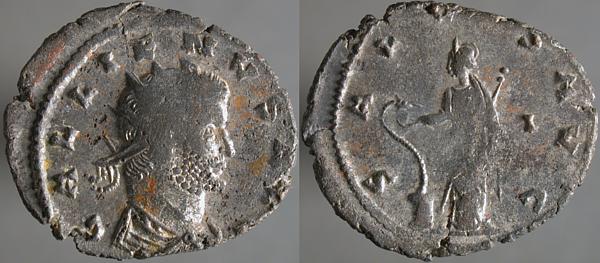
GALLIENVS AVG, Radiate draped cuirassed bust right | SALVS AVG, Salus standing left, with right hand feeding snake rising from column left, holding scepter transverse in left hand. I in right field.
At any point in time, one bust style was predominant for an emperor, though some coins were made with other busts. At Siscia, at this time, a rather simple radiate head right, as here, was most common, but some examples of other busts were used on virtually every other coin.
Theories about why abound, concensus is absent.
Friday, October 07, 2005
Æ19, Thessalian Koinon, Gallienus, SNG Copenhagen 357var
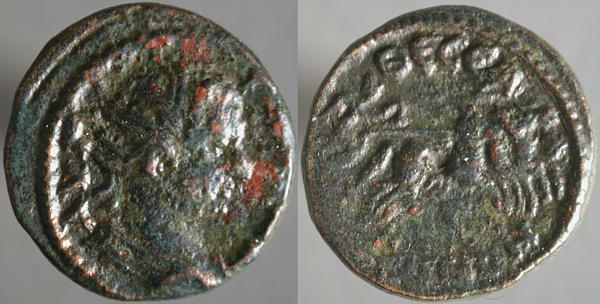
AVΓAΛ[...], Radiate cuirassed bust right | ΘECCA, Nike in quadriga right, [...]ON in exergue.
Not unlike the Homonia coins mentioned recently, the Thessalian Koinon was the remains of a league of cities originally formed for common defense. It may have retained some commercial purpose when this was minted in the 3rd Century C.E.
Thursday, October 06, 2005
Billon antoninianus, Valerian, Samosata, Göbl 1700a
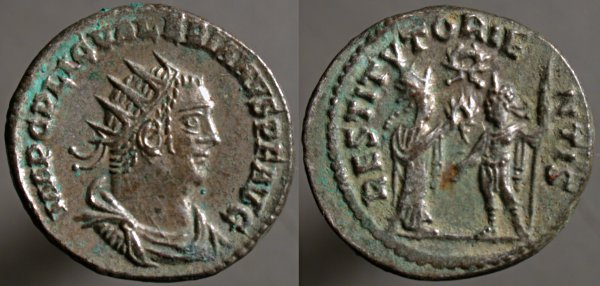
IMP C P LIC VALERIANVS P F AVG, Radiate draped cuirassed bust right | RESTITVT ORIENTIS, Emperor in military garb right, standing left holding spear in left hand, with right receiving wreath from Tyche, left. Wreath in upper field.
Here Tyche is handing the emperor a wreath, but another wreath is shown above that. Similar coins are seen with a star or a wreath with a pellet in the middle in that position:
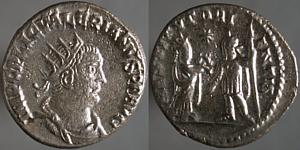
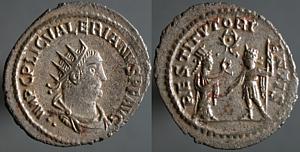
While we tend to use the modern term “mint mark” for such marks, the were previously referred to as “privy marks,” which may better conveyed our ignorance about their meaning. Note that the obverse legend of the lower coin is prefaced with two pellets. Göbl shows similar coins with no such pellets and with a single pellet after the legend.
Pellets, often in varying numbers in the exergue, are widely used at Samosata, in conjunction with field marks. Clearly the information they encode was important to the Romans, perhaps precisely setting responsibility in case of a problem, but that's speculation, and we're not likely to get a better answer soon.
Wednesday, October 05, 2005
Æ "arrowhead money", Istros in Thrace?, c. 5th C. BCE

Technically these almost certainly weren't coins, but they're widely available, often sold as Celtic leaf money". They were probably made by Greek colonists at Istros and meant to resemble small arrowheads.
Tuesday, October 04, 2005
Æ25, Serdica in Thrace, Gallienus, Varbanov (2002) 508
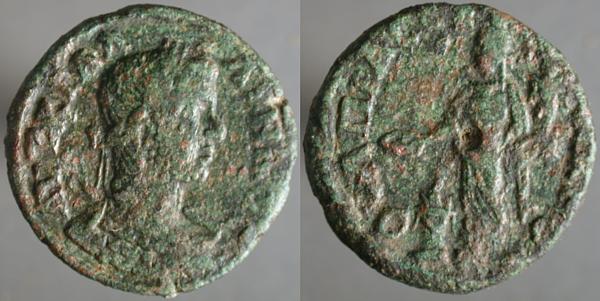
AVT K ΓAΛΛIHNOC, Laureate cuirassed bust right, seen from slightly behind | OVΛΠIAC CEPΔIKHC, Homonia standing left, with right hand sacrificing from patera over flaming altar.
Judging by the prevalence on Roman coins of pouring wine onto a flaming altar, I'm guessing the Romans went thru a lot of burn cream.
Monday, October 03, 2005
Silvered Æ antoninianus, Gallienus, Rome, Göbl 638a
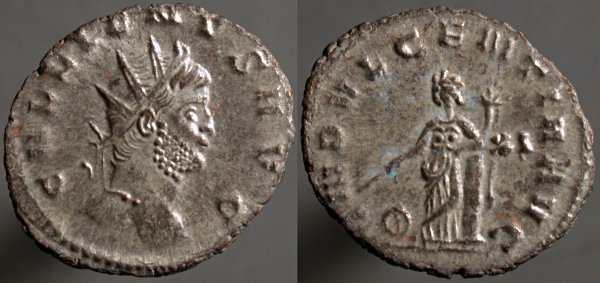
GALLIENVS AVG, Radiate head right | INDVLGENTIA AVG, Indulgentia standing left, leaning on column right, with right hand pointing a baton at wheel at her feet left, holding cornucopia in left hand. XI in right field.
A recent acquisition, this was part of a four-coin lot, which cost me what I think this alone was worth, which is for the best, since I don't think much of the other three.
Indulgentia was the personification of leniency and mercy. A page of various personifications on Roman Imperial coins here.
Sunday, October 02, 2005
Æ33, Apollonia Mordiaeum in Pisidia, Gallienus, ...
SNG Copenhagen 100
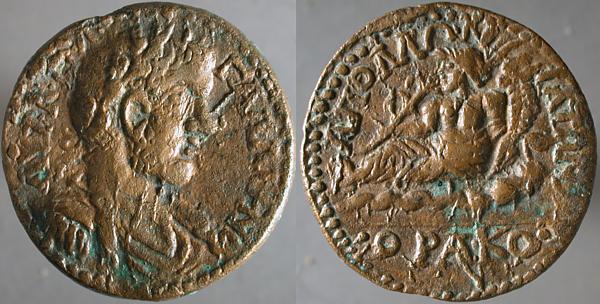
AYT K Π Λ ΓAΛΛIHNO, Laureate draped cuirassed bust right | AΠOΛΛΩN IATΩNΛY, River god reclining left on rocks, holding reed in right hand and cornucopiae in left; beneath him, water flows. ΘPAKO in exergue.
A big hunk of bronze, many examples of this, like this one, show odd raised areas in the field of either side, the result of die cracks. Presumably these dies cracked early in the minting and wasn't replaced. If we understood much about the operation of these provincial mints we'd probably understand that better.
Googling for "Apollonia Mordiaeum" is peculiarly unrewarding, as all the hits seem to be on coin sites or more general sites with a coin page. I don't know what, if anything, now sits where this city was.
-->

AYT K Π Λ ΓAΛΛIHNO, Laureate draped cuirassed bust right | AΠOΛΛΩN IATΩNΛY, River god reclining left on rocks, holding reed in right hand and cornucopiae in left; beneath him, water flows. ΘPAKO in exergue.
A big hunk of bronze, many examples of this, like this one, show odd raised areas in the field of either side, the result of die cracks. Presumably these dies cracked early in the minting and wasn't replaced. If we understood much about the operation of these provincial mints we'd probably understand that better.
Googling for "Apollonia Mordiaeum" is peculiarly unrewarding, as all the hits seem to be on coin sites or more general sites with a coin page. I don't know what, if anything, now sits where this city was.

